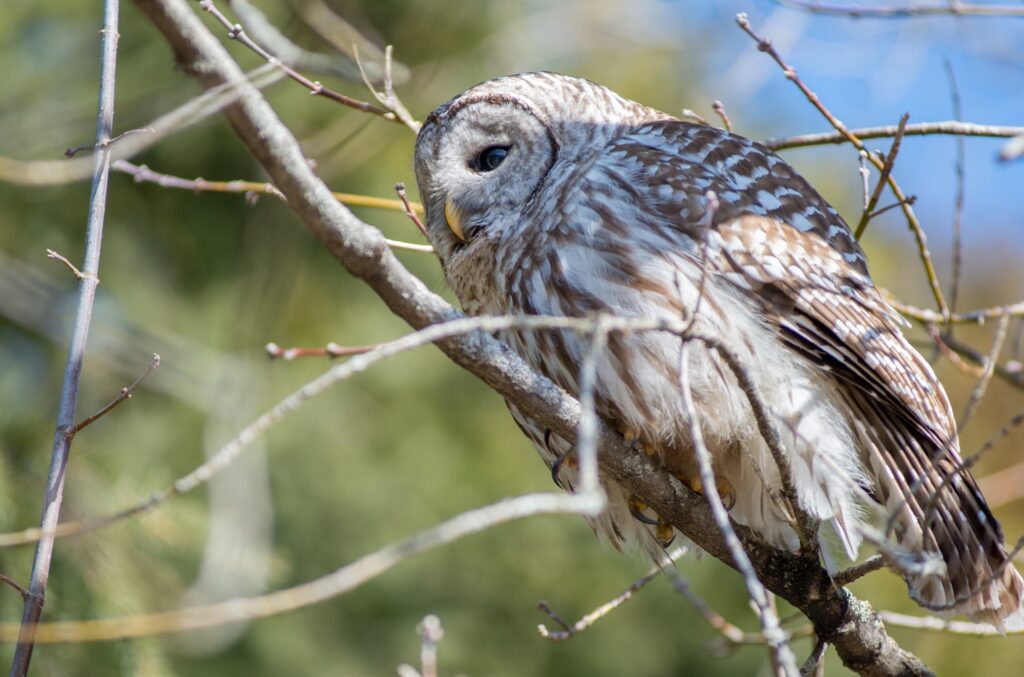Some say that owls are omens of bad luck and doom. Others think of the wise Athena when they look into the penetrating eyes of an owl. In reality, some of these beautiful animals can be a farmer’s best friend, and others are a birder’s “mega-find.” Their plumage, hunting style, and even their hoots are incredibly fascinating.
Tennessee is gifted with 423 spectacular species of birds; eight of which are owl species. The best thing about Tennessee is that all of its birding sanctuaries are available to the public, from the pits and marshes to the lakes and parks.
That being said, this article attempts to shed light on the different species of owls in Tennessee, so you may want to stick around for a while.
Barn Owl
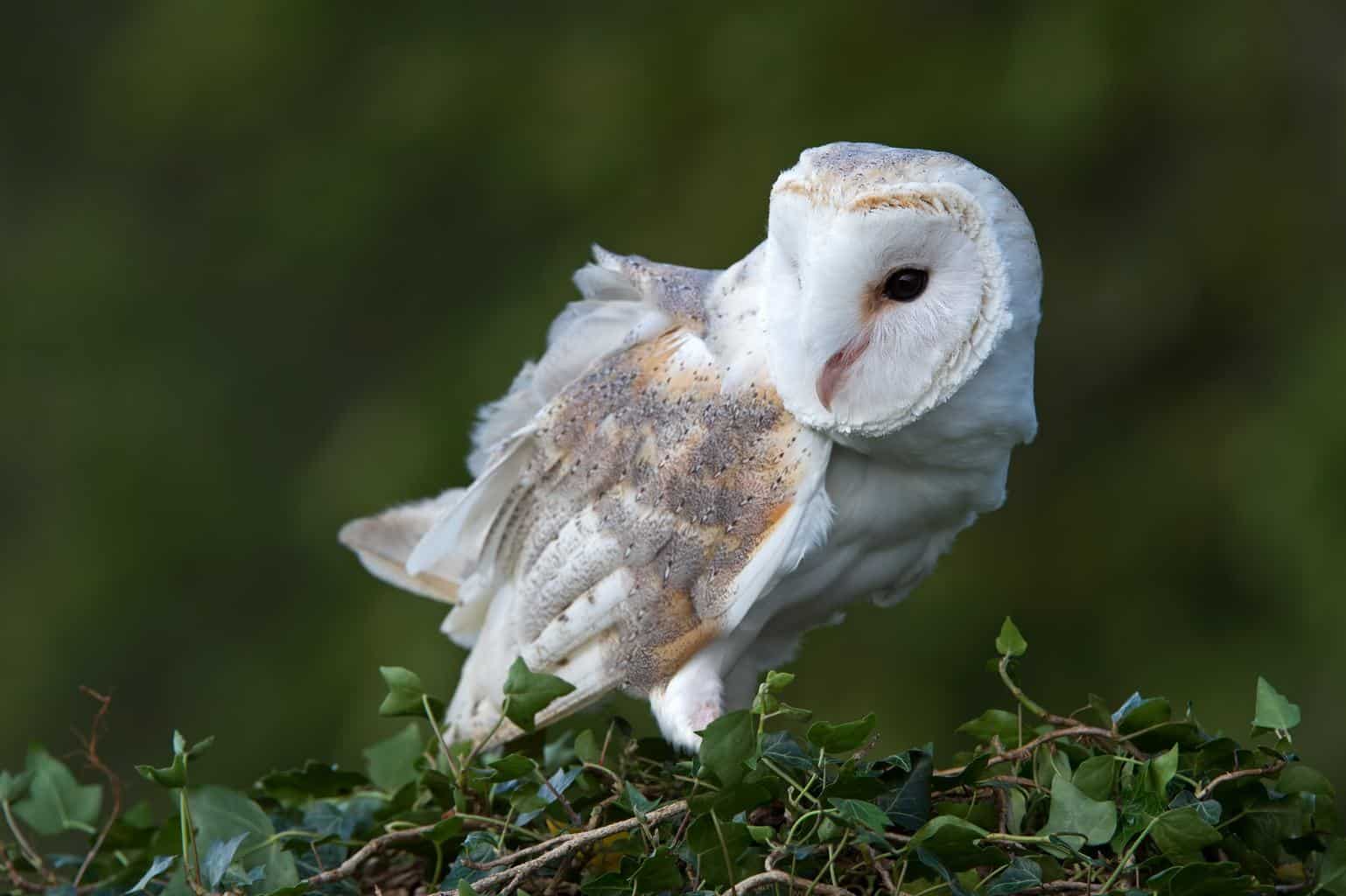
- Scientific name: Tyto alba
- Length: 13-16 inches
- Weight: 14.1-24.7 oz
- Wingspan: 39-49 inches
The Barn owl has a white heart-shaped face and striking black eyes. Its head and back are caramel-colored and streaked with gray and its breast is white strewn with grayish-black spots.
Barn owls are easy to find as they’re spread around the world and live in a wide range of habitats. Be it in forests, deserts, agricultural fields, urban areas, or barns, you’ll hear their harsh hooting.
Barn owls have impeccable hearing abilities and excellent low-light vision, making even a dark night seem bright to them. They also have dark eyes that make nighttime camouflage easier. In addition, their wings are structured to muffle the sound of their flapping. Their comparatively large size makes them slow fliers. These evolutionary traits are the reason they are one of the stealthiest nocturnal hunters.
Barn owls will come to your nests if you provide them with good food. So, if you live in an open, secluded area, build them a big enough nest, place it at a nest height of about 12 feet, and you might make a new friend.
They mostly feed on rodents, which is great for farmers. However, they also eat birds, rabbits, and reptiles.
Snowy Owl
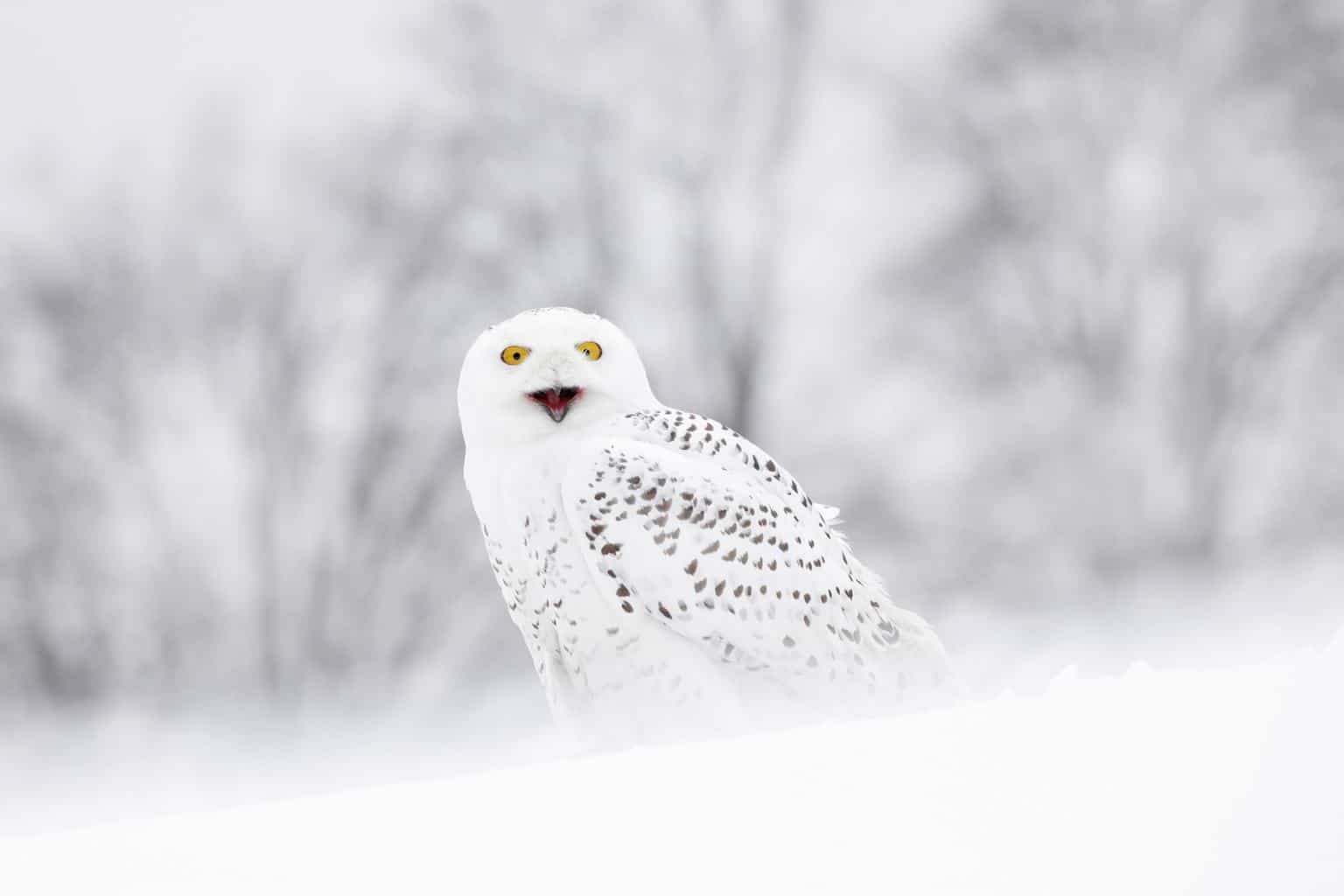
- Scientific name: Bubo scandiacus
- Length: 20.5-27.9 inches
- Weight: 56.4-104.1 oz
- Wingspan: 49.6-57.1 inches
When we say Snowy owls, images of Harry Potter’s Hedwig come to mind! The males have full-on white plumage with sparse black or brown speckles. On the other hand, the females are heavily covered in speckles, except for their pure white faces. They both have bright yellow eyes and dark beaks.
The snowy owl, also known as the polar owl, is mainly limited to the arctic. Nonetheless, its rare visits to Tennessee during the cold season make for a pleasant surprise. You’ll most likely find the Snowy owls on the tundra, but they also perch on dunes, beaches, and prairies.
They reject all attempts at attracting them to your yard. However, they are active during the day, which makes them easy to spot.
They are known to migrate when rats and lemmings are hard to find, and they’re known for their territorial behavior, too. They can become very possessive of their territory during their breeding season, even getting into fights with other Snowy owls.
Long-Eared Owl
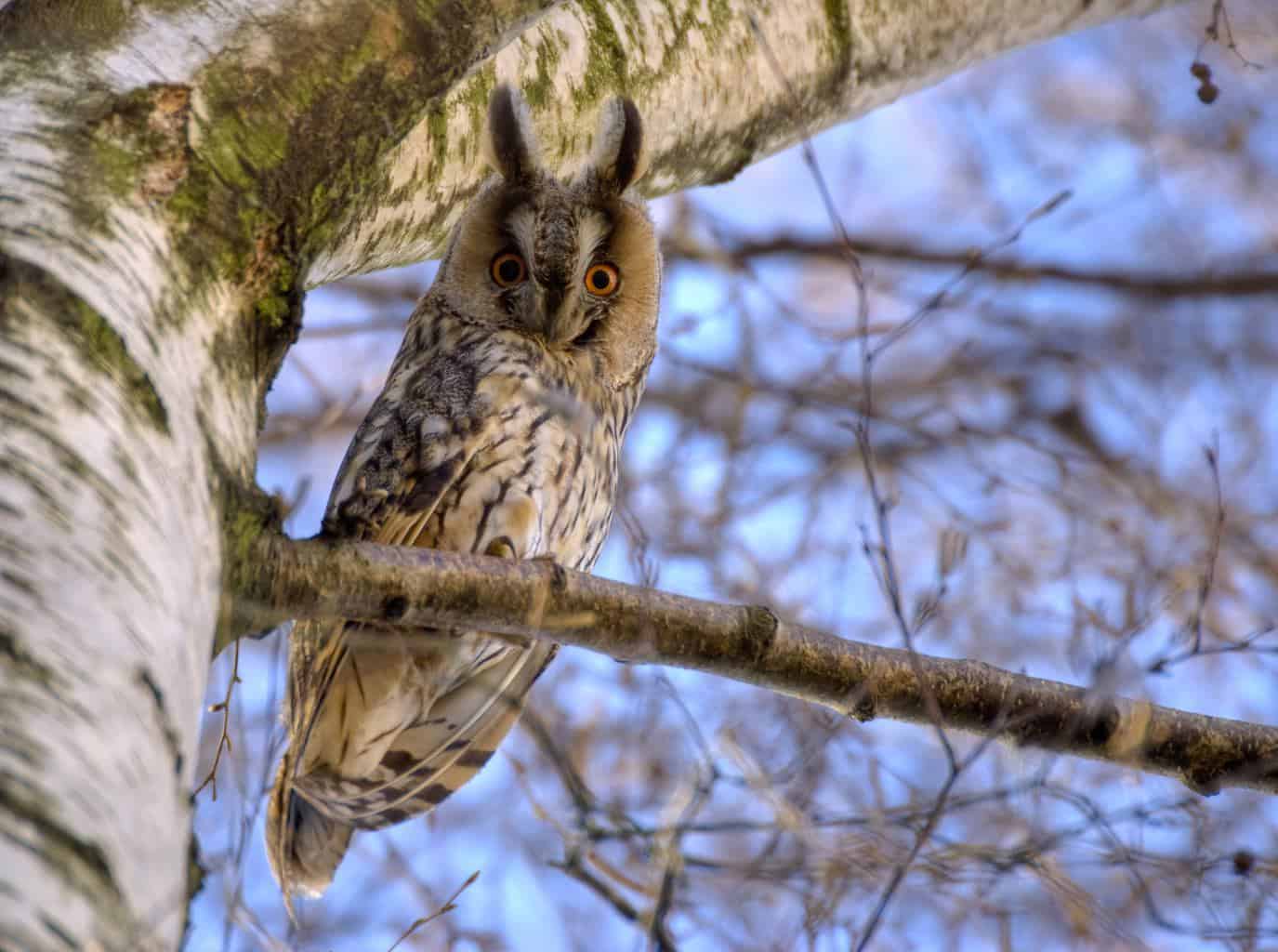
- Scientific name: Asio otus
- Length: 13 – 16 inches
- Weight: 7.8-15.3 oz
- Wingspan: 36 – 42 inches
Long-eared owls have a pair of tawny crescents framing their cheeks. They also have another white pair of crescents on the inner sides of their eyes. Another distinctive feature is their long ear tufts, which are prominent feathers on their head that look like small rabbit ears. They are black with a couple of white and hazelnut feathers.
The same goes for their bodies, which are dark brown striped with white and hazelnut. The American owl variations have yellow eyes, while the Eurasian ones have warm orange eyes.
They are widely dispersed in North America, Eurasia, the Middle East, and northern Africa. Some of them are year-round residents while others, particularly those of the North, migrate when food runs short.
They prefer dense vegetation, such as woods, hedgerows, and tree strips along rivers to use as nest sites. They are great at maneuvering through the tree branches, even in complete darkness.
Short-Eared Owl
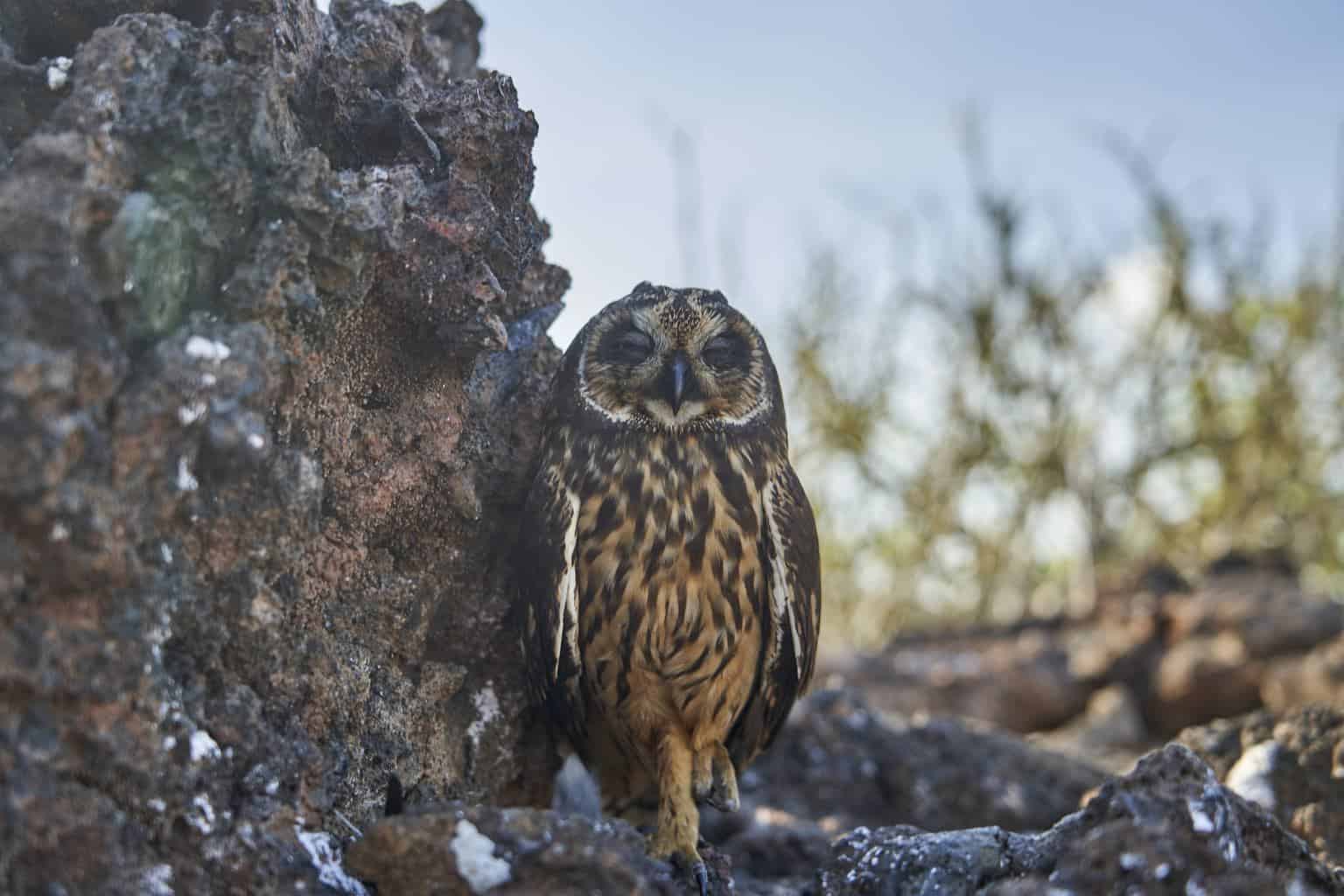
- Scientific name: Asio flammeus
- Length: 13.4-16.9 inches
- Weight: 7.3-16.8 oz
- Wingspan: 33.5-40.5 inches
Short-eared owls have some of the most remarkable owl eyes. They’re yellow encased in smoky rings. Their face is whitish, while the rest of their bodies are covered in brown and amber patches. Their ear tufts are so small that they often go unseen. They are widely distributed around the world, particularly in North America and Eurasia, yet they aren’t commonly seen in Tennessee.
If you’re keeping an eye out, you might want to check out prairies, marshes, or swamps. That’s one difference between Long-eared owls and short-eared ones; the latter actually inhabit treeless areas. You’ll find short-eared owls’ nests in dry areas like a fencepost or a hammock.
Their diets are similar to other owls, but they seem to take a special liking to meadow voles. They hunt during daylight, particularly at dawn and dusk.
They’re unlikely to visit a backyard, but they would go for a suburban one if they did. Short-eared owls and Barn owls are often found in the same habitats, and there’s an ongoing competition between the two which affects the population of both species.
Great Horned Owl
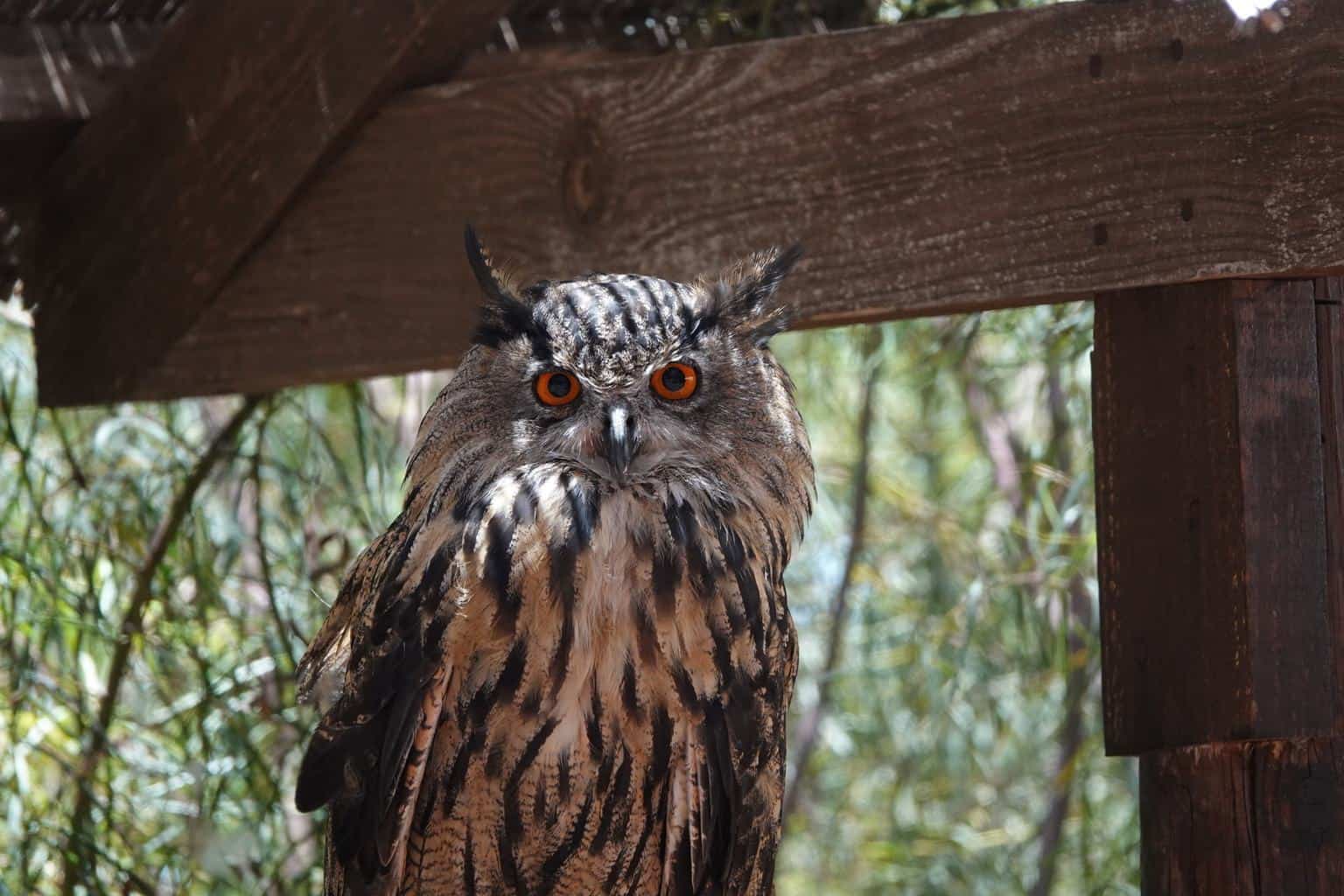
- Scientific name: Bubo virginianus
- Length: 24 inches
- Weight: 32.1-88.2 oz
- Wingspan: 39.8-57.1 inches
This is the largest owl you’ll find in Tennessee and the fifth-largest owl in the world. It’s called “Great Horned” because of its black and cinnamon-colored ear tufts that look like horns. It has a small, reddish-brown face that’s almost squashed-looking, and bold yellow eyes that are outlined with white feathers. As for its body, it’s mottled with gray and light brown.
The Great Horned owl can be found throughout the Arctic, the United States, and even range down into South America. It doesn’t confine itself to a specific habitat or diet. It lives in deserts, forests, tundra, mountains, and prairies.
The Great Horned owl can eat anything, including rodents, moles, squirrels, and swans. It even feeds on raptors such as hawks, falcons, and other owls. That being said, its favorite meal is still skunks.
Barred Owl
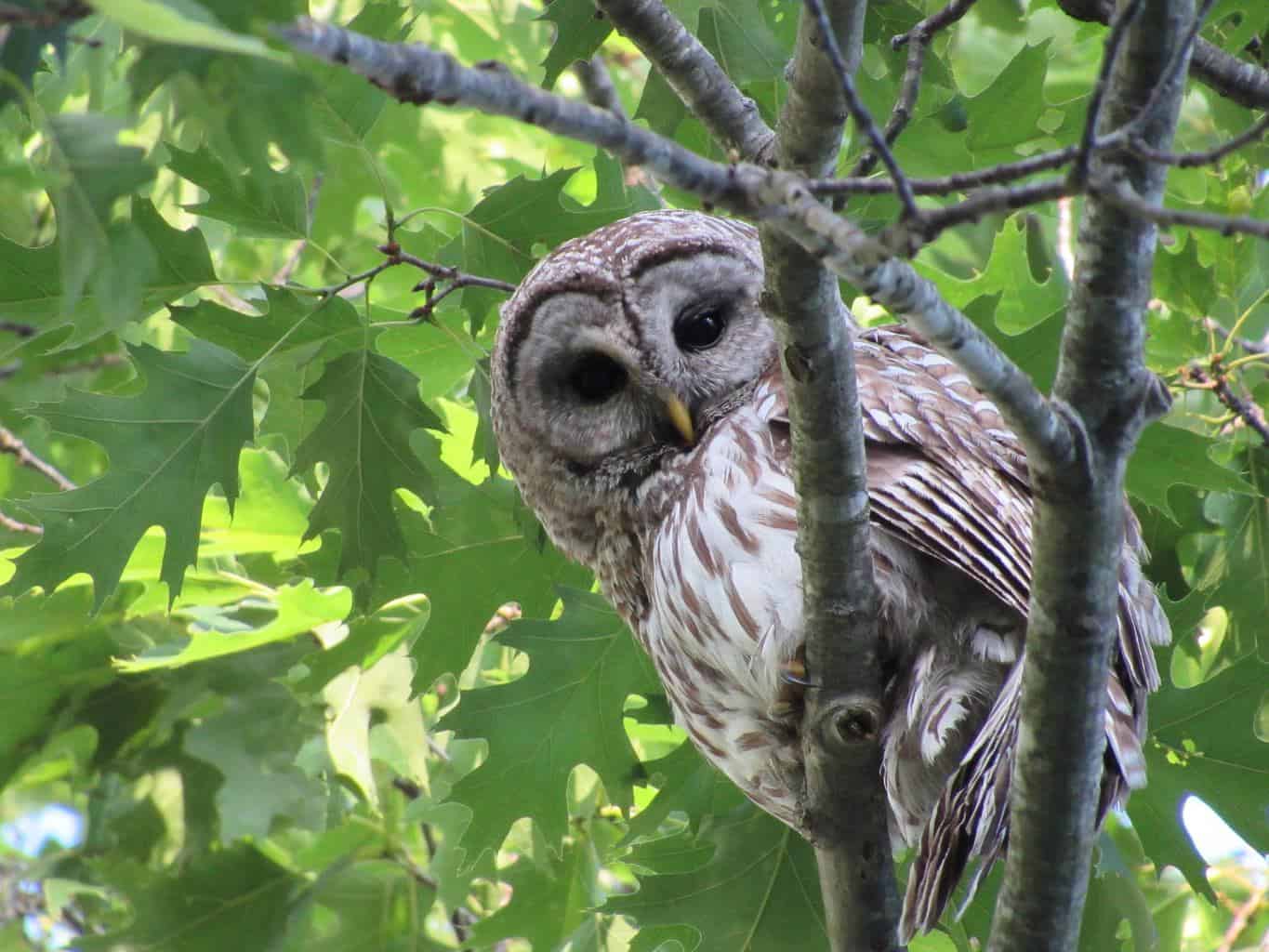
- Scientific name: Strix varia
- Length: 16.9-19.7 inches
- Weight: 16.6-37.0 oz
- Wingspan: 39.0-43.3 inches
The Barred owl’s plumage is one of the most enticing there is. It’s chilly gray and heavily barred with rust-colored plumage. However, the barring is a bit lighter on the front and its face is untainted. The owl’s eyes are piercing black and the bill is yellow.
It is native to eastern North America, yet it has expanded north and west through Canada. The Barred owl can be found in swamps, dense forests of deciduous trees, or perched on the tops of mountains.
The Barred owl is just a little smaller than the Great Horned owl, yet it completely avoids the Great Horned owl’s company due to that owl’s reputation of preying on other owls.
Although Barred owls are mostly nocturnal birds, little owlets can confuse their day and night schedule and become diurnal.
You probably won’t be able to tempt Barred Owls into nests during mating season, but you can sight them in cemeteries, bushy trees in your neighborhood, or the park.
Eastern Screech Owl
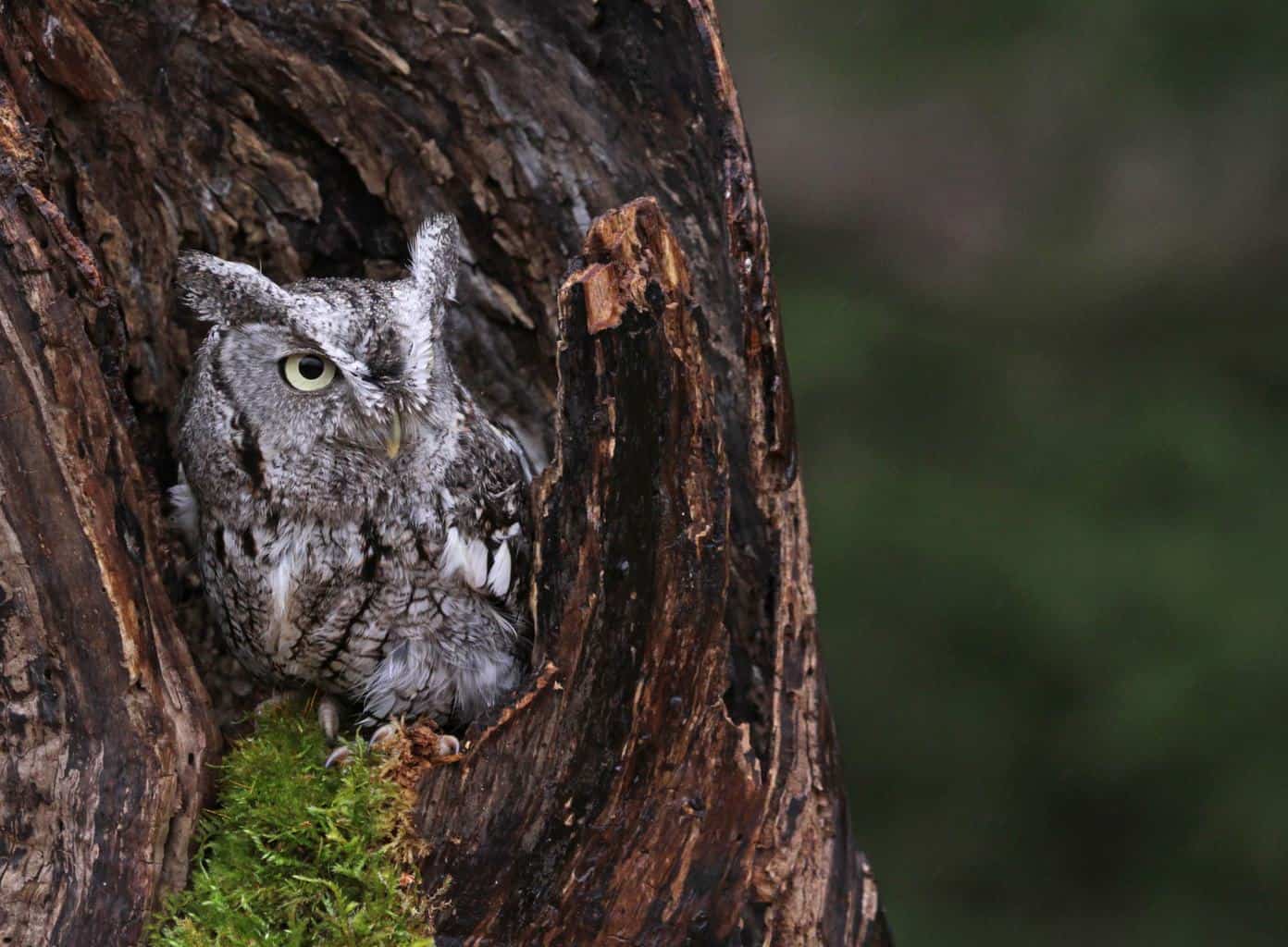
- Scientific name: Megascops asio
- Length: 6.3-9.8 inches
- Weight: 4.3-8.6 oz
- Wingspan: 18.9-24.0 inches
There are several sub-categories of Eastern Screech Owl, each with its own unique coloration. In Tennessee, one can find the gray morph and the red morph. The gray morph is light gray with vertical streaks of a darker shade. It has wide yellow eyes and tiny ear tufts. The red morph is copper-colored with vertical brown bands. Its chest, however, is adorned with neat white feathers.
The owl’s name might be a bit exaggerated since their “classic sound” is more like a whinny or an even pitched trill than a shrill screech.
It’s commonly sighted in eastern North America from the Rocky Mountains to the Atlantic coast. The majority of owls in Tennessee are actually the Eastern Screech Owl. Despite that, it isn’t seen that much since it’s extremely nocturnal.
It nests in all types of forests but prefers to hunt in open clearings. You can also find it in parks, swamps, and gardens.
Eastern Screech owls are one of the few species that would use a human-made nest box. Regardless, they’re territorial birds, so make sure you give them their space.
Northern Saw-Whet Owl
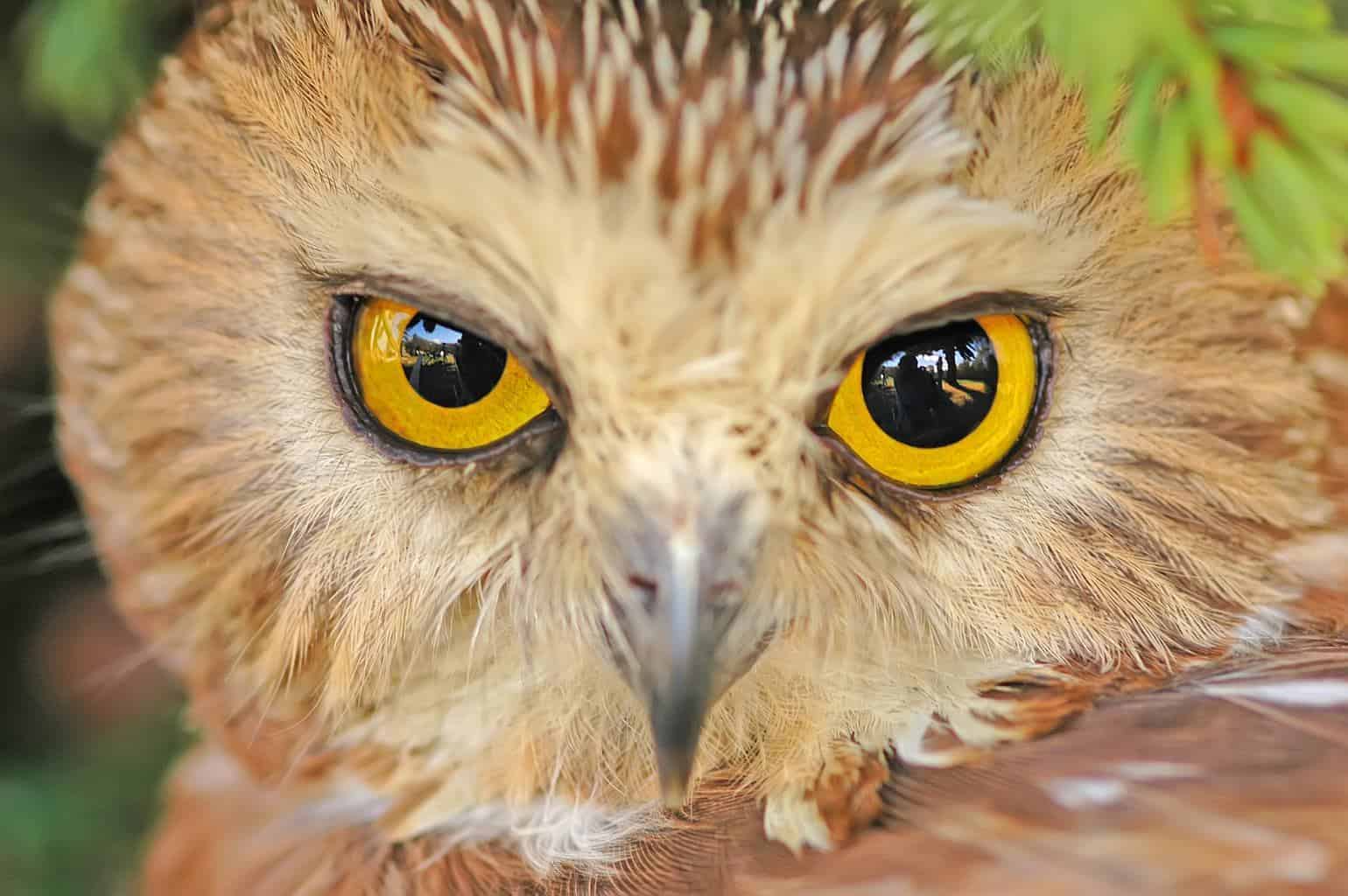
- Scientific name: Aegolius acadicus
- Length: 6.5–9 inches
- Weight: 2.3-5.3 oz
- Wingspan: 16.5–22.2 inches
The Northern Saw-whet owls are really small in size; just a little bigger than the palm of your hand. They have a rounded face and bright yellow eyes adorned with white eyebrows. The eyebrows are more prominent in juvenile owls since they are dark-faced. The beaks are black, and the plumage is barred brown and white.
Their name is derived from the sound they make, which resembles the whetting of a saw.
Their range includes Alaska, Nova Scotia, and North America. They live in lush forests, rural areas, suburbs, anywhere they can build their nests in trees.
The Northern Saw-whet owl will roost in your owl nest box if you are successful in tempting it. However, it’s still a nocturnal animal, which means your best chances of seeing it are at dusk.
Wrap Up
If you’re looking to have some hooting owls in your backyard, you might have your work cut out for you. Nonetheless, Northern Saw-whet owls, Eastern Screech owls, and Barn owls are your best bet. If all your attempts are fruitless, you can always invite over woodpeckers. They appreciate a little birdhouse, and their chirping is quite enjoyable!
Don’t be discouraged, though, as owls are very common in Tennessee. Knowing the habitat of each species and the right time to look for them can help you catch sight of them.

